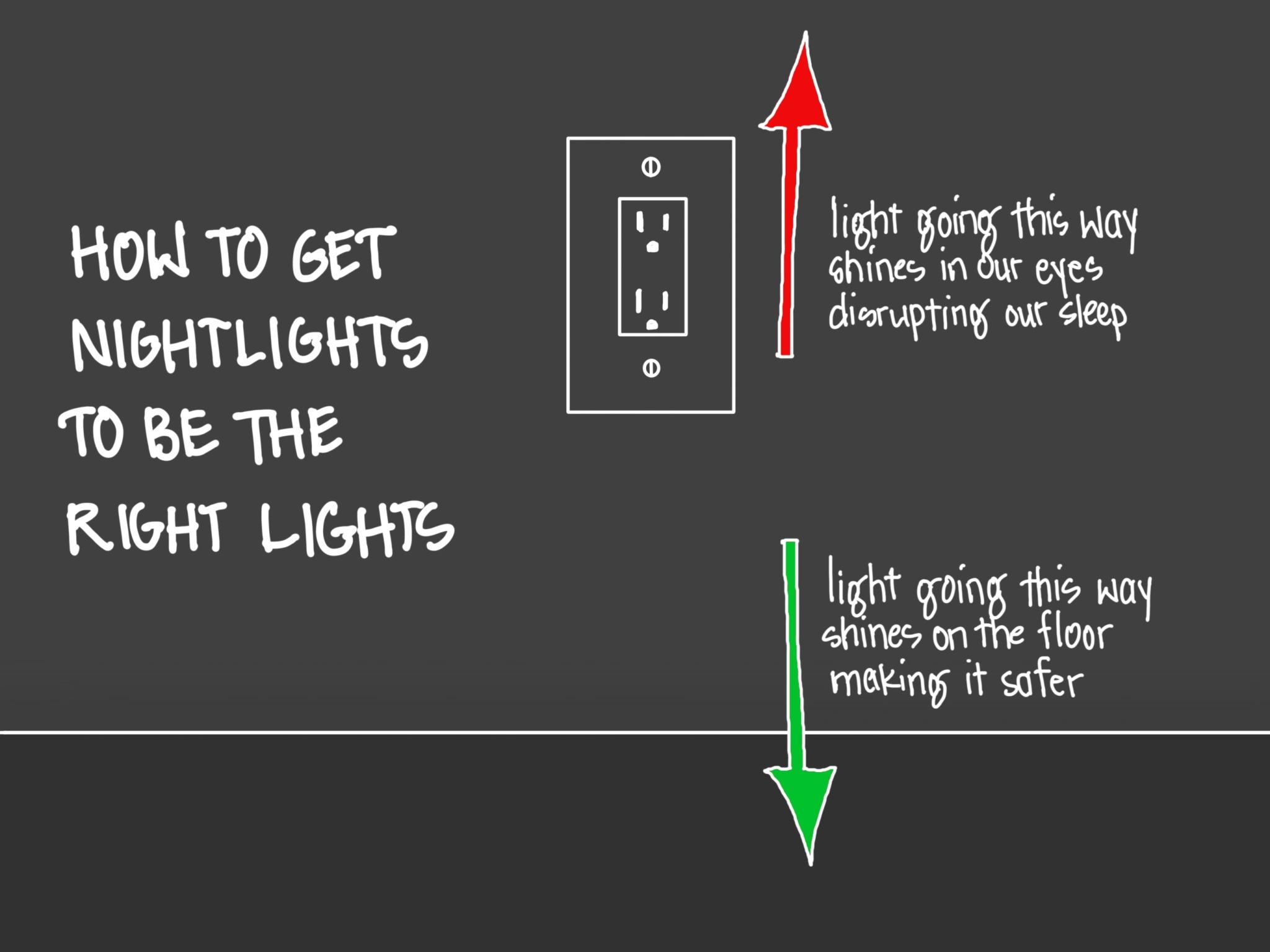It is particularly difficult to change lighting in a bathroom without hiring an electrician. Most baths are filled with tubs, showers, toilets, and vanities that leave little to no room for tables and lamps. And plug-in lamps near a tub are a bad idea from a safety perspective – electricity near water is a time-honored no-no. So is there anything you can do to improve lighting in a bathroom that does not require electrical work or contractors?
Yep. Nightlights.
Nightlights? Seriously? This is an entire blog post about plug-in nightlights, those cheap little plastic things that we begged our moms to put in our dark scary bedrooms? Turns out this post is a great example of what I and my fellow lighting designers do: we think it through. And thinking it through usually leads us to something entirely different.
Most nightlights are still shaped like the ones of my childhood forty years ago, though the small cone-shaped bulb has probably been replaced by a too-bright LED. The most common looks something like this:
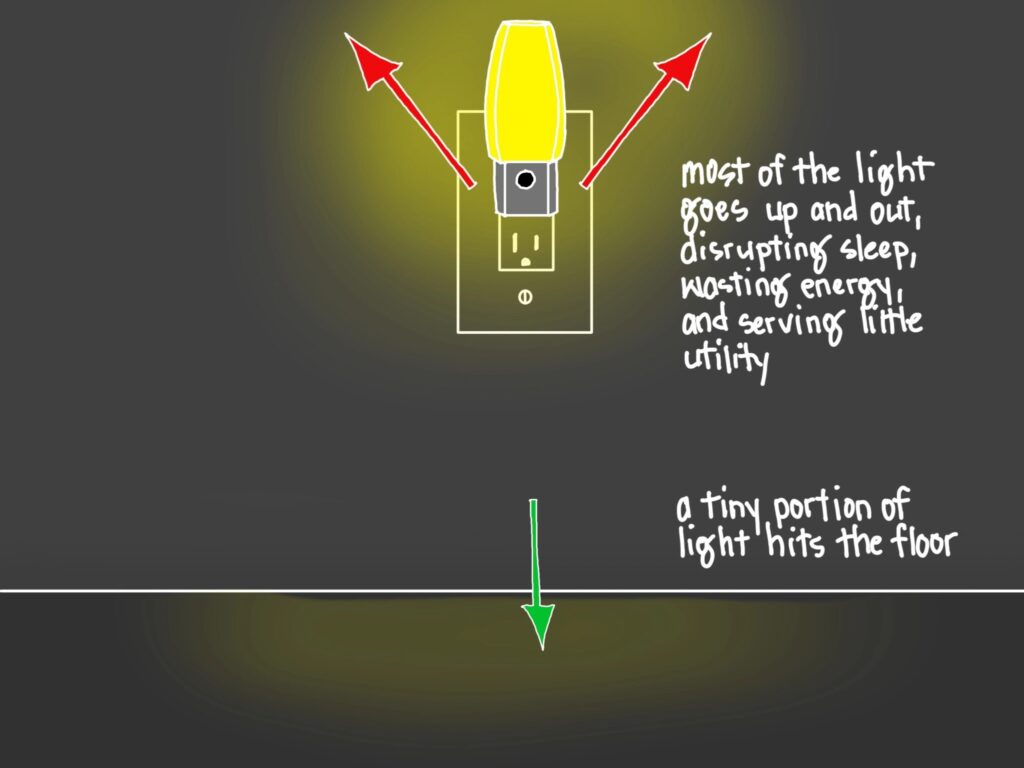
These nightlights, like most lighting put into homes these days, are pretty much awful at providing useful light. They most often put the most light exactly where it is needed the least and then put the least light exactly where it is needed the most. Like a kitchen with lights directly over the floor or a bedroom with only a ceiling fan light, a bathroom with this kind of nightlight has useable light only by accident. This arrangement puts the least light on the floor or sink, presumably what you want to see late at night, and the most right into your eyes.
We call that glare, but at night the light in your eyes can be something even worse- it can be disruptive to your sleep. That bright light shining out and up into your eyes could wake you up more and slow down your melatonin suppression, making it harder to get back to sleep. And if your sleep is not great, a host of life-altering negative effects can follow you every day.

Theater people get it. They hate light in the eyes of the audience, so they came up with that little louvered step light that pushes light down towards the carpet. You’ve probably seen them in movie theaters or performing arts facilities – often they are even built into the seating at the aisles. And fortunately, a select few are available for sale in a plug-in variety. These will not perform quite as well as the built-in versions, but in a pinch they do a much better job of delivering usable light and reducing glare in a bathroom (or anywhere a nightlight is needed).
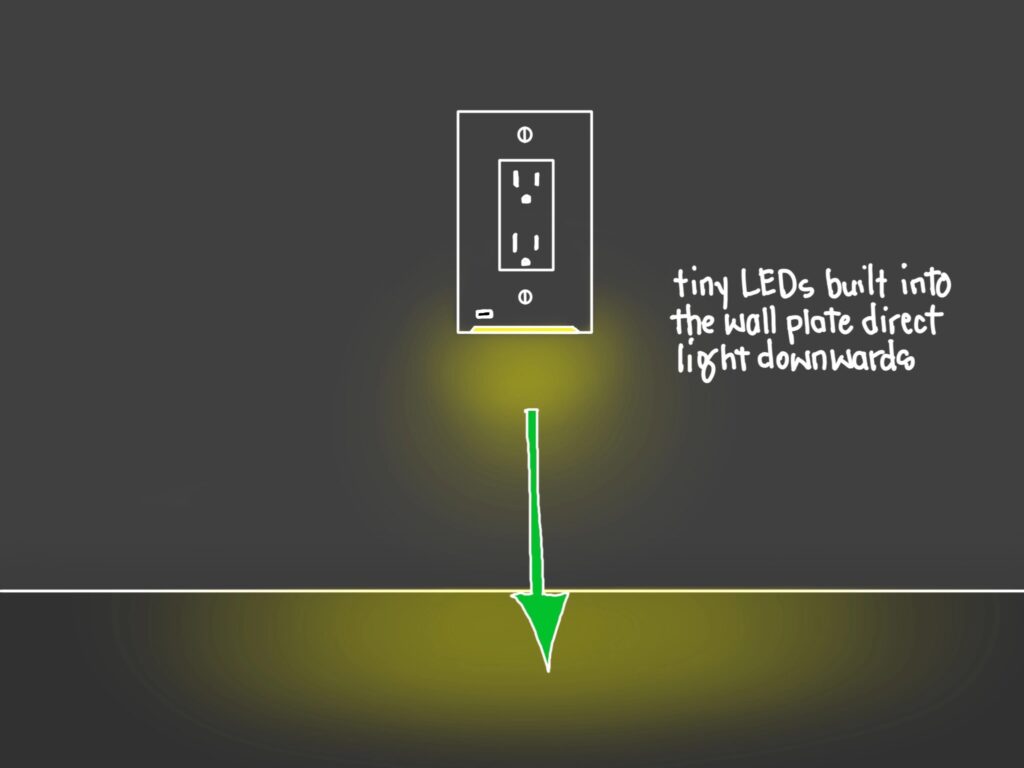
This approach was taken one step further by a company that embedded tiny LEDs into the wall plate itself, casting light down where needed and with the added benefit of freeing up both plugs (for some unknown reason, despite being able to put supercomputers into our wrist watches, we can’t seem to build many nightlights that don’t block both plugs on a receptacle). I have never used these myself, perhaps because I’m lazy, but it seems like a pretty good idea to me.
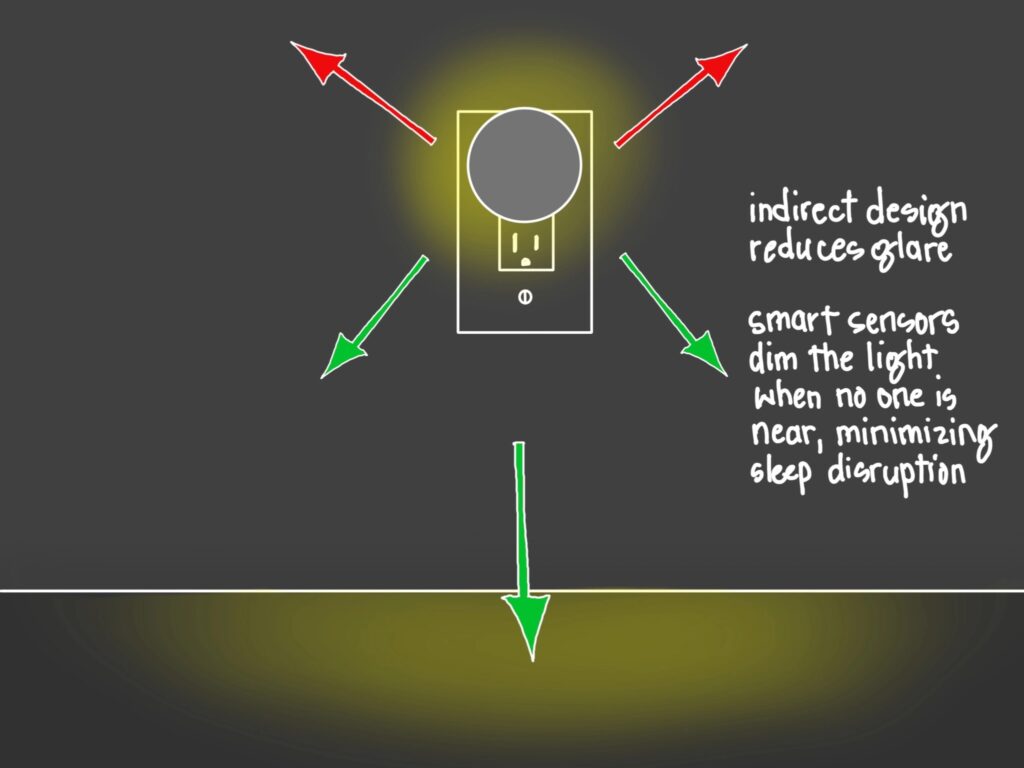
So what’s the future of nightlights? Lighting designers keep thinking it through, and that will lead to even more changes. The new nightlight from Casper might not meet my criteria for fully shielded light, but it does offer some intriguing functionality I have not seen before. The nightlight is a little like Santa Claus – it knows when you are sleeping – and it will dim itself down to a tiny glow to minimize sleep disruption when no one is moving around. When tiny sensors detect motion, the nightlight will increase brightness to make it easier for you to see. And, of course, if there is other electric light in the room the nightlight will know and shut itself off. Now that’s pretty smart, and I hope we see more of them in the future.
There are a lot of options out there for nightlights to help you see your bathroom in the middle of the night. Not all are created equal, and you may need to look around a bit to find one that meets your needs. Just think like a lighting designer: where do I want the light to be and how should it function? Then rest easy, literally.
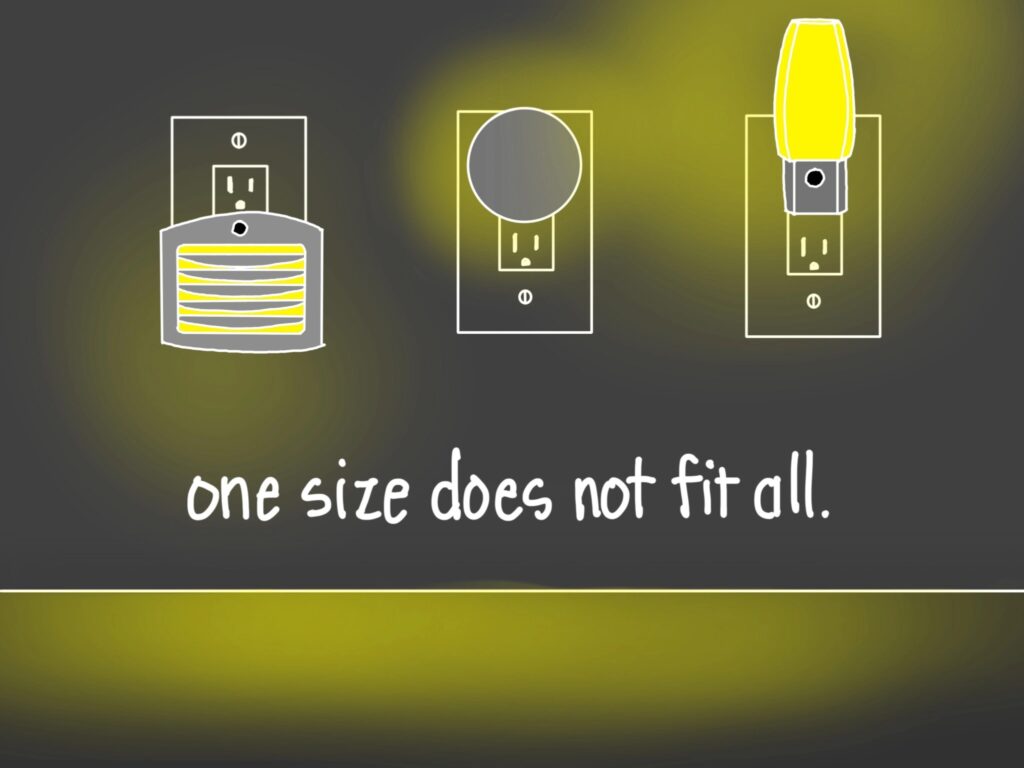
And one more thing…
Seriously, coming up with a single plug-in solution for a bathroom was pretty tricky. Coming up with a second? There is not a clear answer. If you’re creative you might be able to hang some plug-in wall sconces on either side of the mirror for better face lighting. A rechargeable glowing lantern or battery-operated candles might be nice for a relaxing bath. And tape light, plugged in and operated by a motion sensor, would be nice underneath a floating vanity if there is a receptacle handy. If you own your home and have know-how or extra money, it might be worth checking out 1THING you can do to make your bathroom better and brighter.
